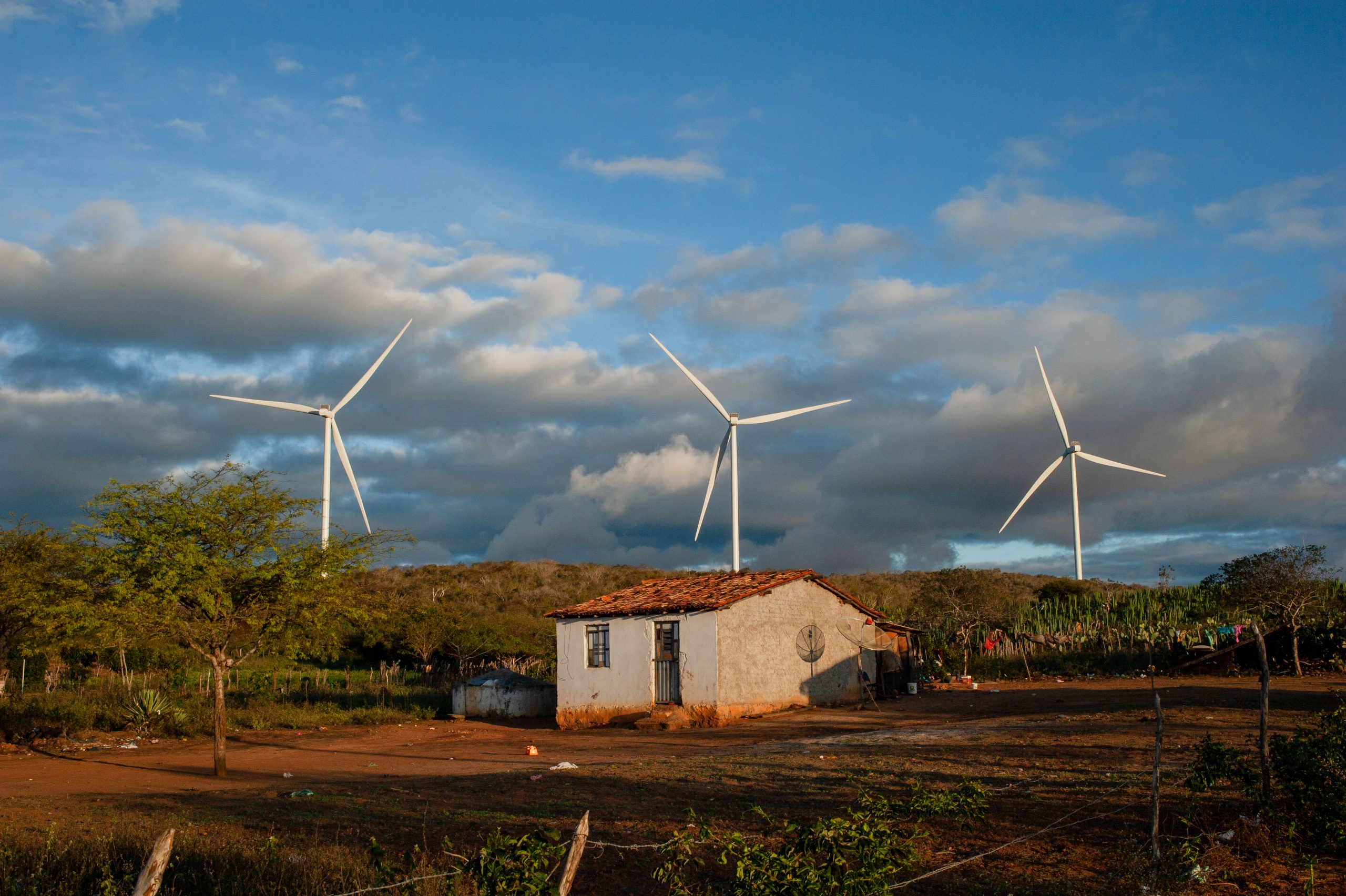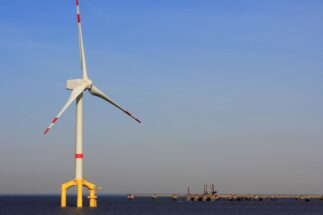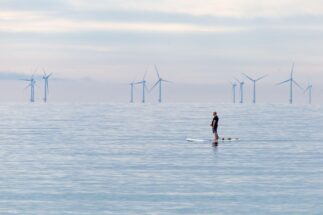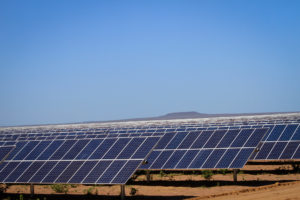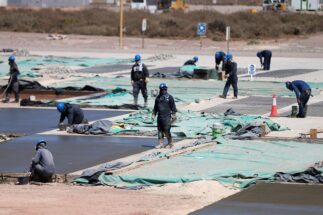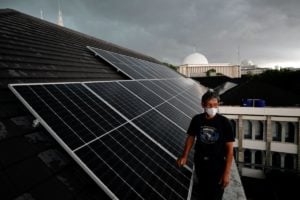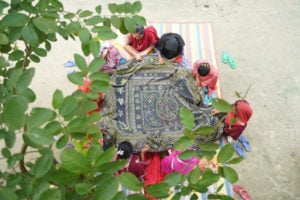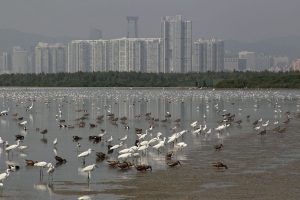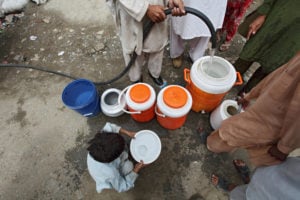Its energy is known for being clean, but its rapid expansion across Brazil’s Northeast region has not been so polished. In the state of Bahia, the country’s leader in wind generation, communities in at least 11 municipalities are experiencing conflicts with companies in the sector, some of which have been involved in disputes for more than a decade.
Some 248 wind farms operate day and night in Bahia, generating 33% of Brazil’s wind energy, with another 196 plants under construction or planned in the state, according to official data. One of them, a hybrid wind and solar project with 405 turbines, promises to be the largest of its kind in the country.
But as wind power plants have advanced across the state they have coveted lands already occupied by farming villages, many since the colonial era, when cattle breeding expanded into the Caatinga, the semi-arid shrubland biome of northeastern Brazil.

Many of these communities practise a form of commons-based family farming known as fundo de pasto (lit: “pasture fund”), in which land is shared, with no delimitations or fencing and on which traditions of their ancestors are maintained – usually without formal land titles.
These disputes occur mainly in the “wind corridors”, areas in the interior of Bahia where the constancy and speed of the winds guarantee ideal conditions for energy generation, but where populations punished by poverty, by the semi-arid climate and by precarious land governance live.
Eleven municipalities in Bahia state currently have communities with some type of conflict or complaint against large-scale wind developments, according to data obtained by the reporter from Articulação Estadual de Fundo e Fecho de Pasto and Central das Associações de Fundo e Fecho de Pasto, two organisations representing these commons-farming communities.
It’s clean energy with dirty methods
While some traditional communities enter into dispute directly with the companies, mainly over contracts, others experience internal conflicts, as families differ on the installation of wind farms. Political disorganisation also usually weakens their efforts to obtain land titles and protect their areas.
“It is a clean energy with dirty methods,” says Marina Rocha, an agent of the Pastoral Land Commission (CPT) in Juazeiro, a municipality in Bahia. “We don’t know of any company that has arrived in the communities in a reasonably honest way.”
Founded in the 1970s, the CPT is one of the most active organisations in the defence of rural communities’ rights. Rocha says she has come across contracts that are generally obscure and have a legal language that rural communities generally do not understand.
Opaque agreements
Campo Formoso, a municipality in the north of Bahia state some 450 kilometres from its capital city, Salvador, has 22 fundo de pasto commons, some dating back to the 17th century, according to a mapping done by the Federal University of Bahia (UFBA) alongside the state government.
The region has already experienced previous economic booms from the mining of precious stones and the cultivation of sisal, a plant adapted from the Caatinga that is used in the production of fabrics, threads and ropes. Around 15 years ago, the great wind power potential of Campo Formoso, located at the crossing of wind corridors, began to attract power companies.
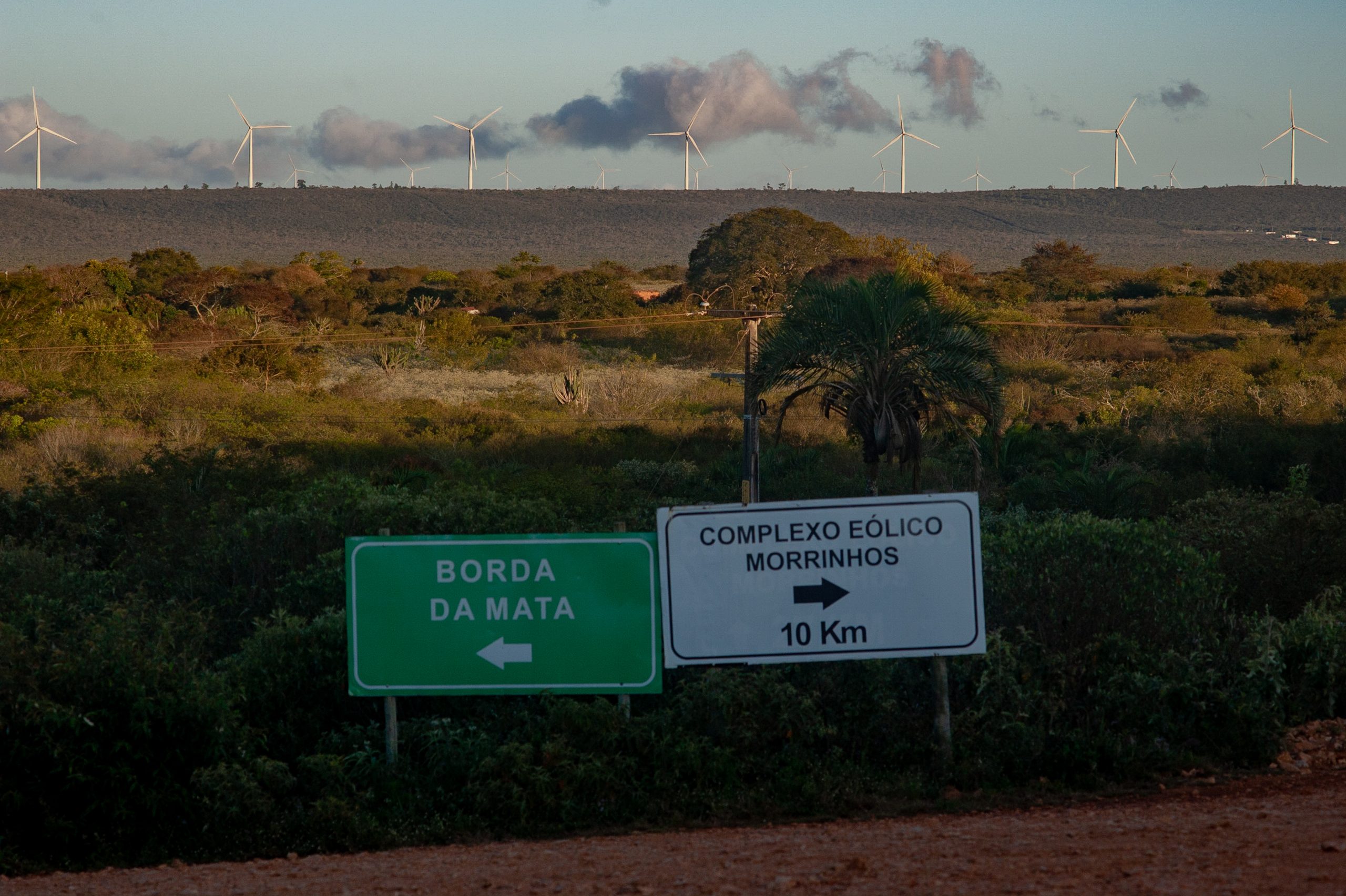
The municipality’s own logo now features a drawing of turbines atop the Serra de Jacobina, a mountain range in the region. But the power plants did not arrive without causing impacts.
In 2008, an association representing fundo de pasto farmers in a community called Fazenda Quina signed a contract with multinational CGN Brazil Energy, for the installation of three turbines on a site where 12 families live, in a contract valid for 49 years. The company is a subsidiary of CGN Energy International, based in Shenzhen, China.
At the time, CGN Brazil Energy was starting to install what became the Complexo Eólico Morrinhos, a wind farm complex consisting of six units with a total installed capacity of 180 megawatts.
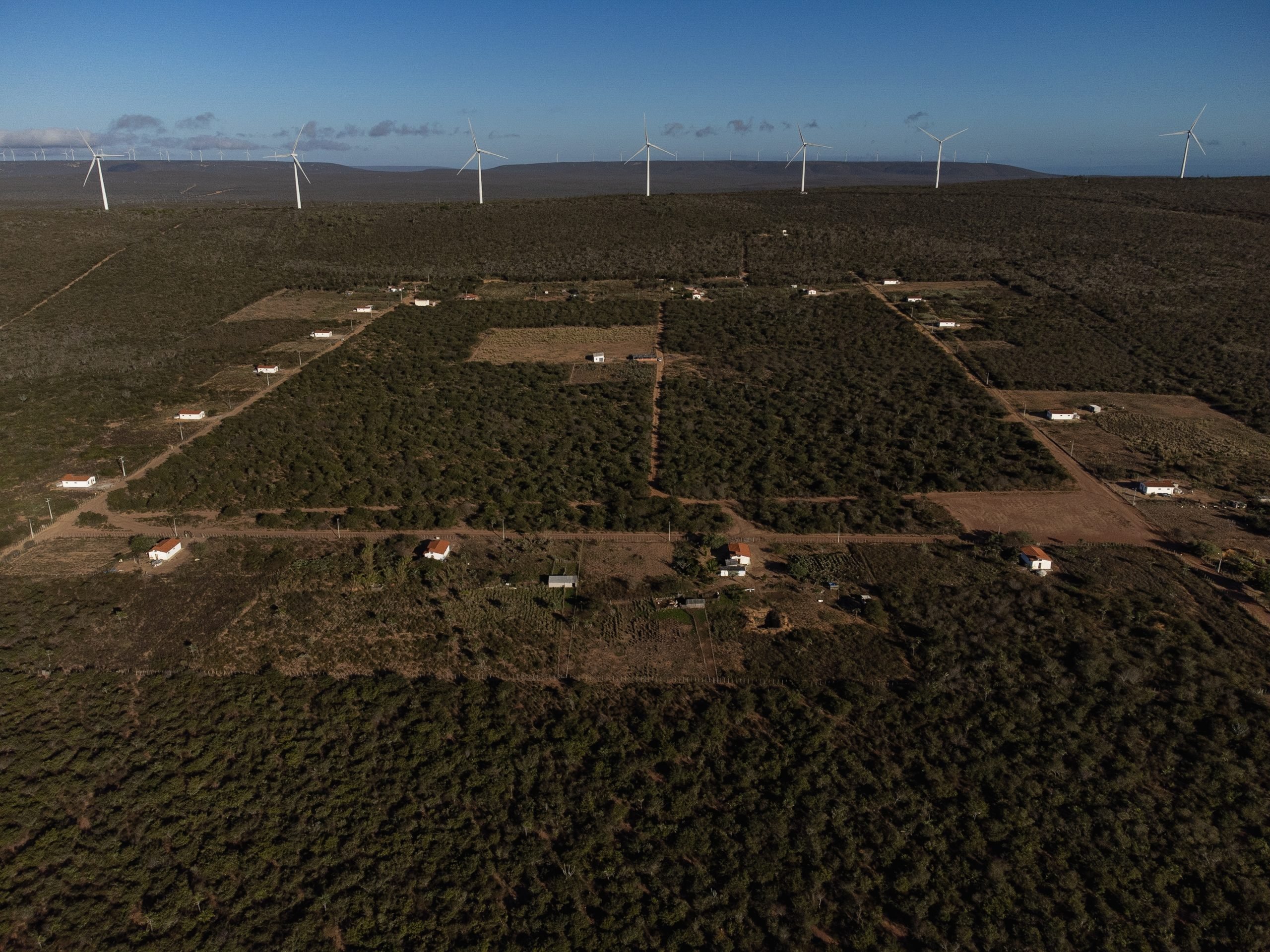
“As entrepreneurs in the sector generally do not own land in rural Brazil, long-term leases are the most common way of accessing land for the installation of turbines. It happens that in most areas of wind energy potential in the northeast there are peasants, many of them with traditional ways of life,” explains Carolina Ribeiro, a professor at the Federal University of Parnaíba Delta (UFDPar) in the state of Piauí, who studied the conflicts experienced by communities in Brotas de Macaúbas, also in Bahia state.
Although he admits that the monthly payment received by the community – on average, 4,500 reais (US$840) – helps in the improvement of community infrastructure, José Salvo, president of the Fazenda Quina association, complains about the lack of transparency on the part of the company. The agreed upon monthly payment is 1.5% of the turbines’ energy generation, but the community does not know how the calculation is made, whether it is based on the gross or net value of energy production, for example.
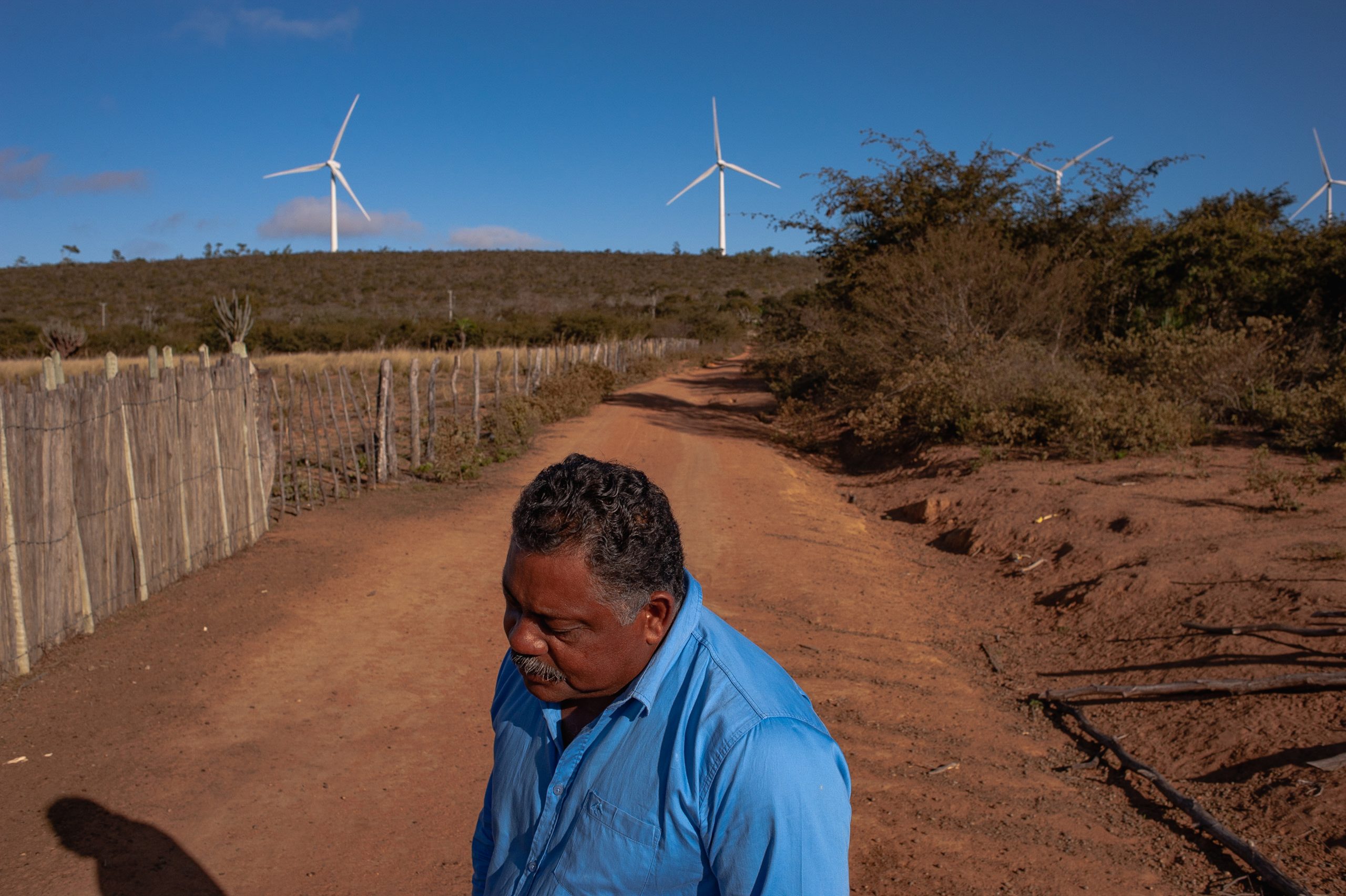
“When we call to clarify, they say that this information is not disclosed. We don’t know how much they produce and how they market the energy,” Salvo complains.
The Brazilian office of CGN Brazil Energy told Diálogo Chino that it has a WhatsApp contact for tenants to communicate with it, and that it is working on a tool to make its wind generation data available. The company did not accept an interview and commented that it does not publicly comment on commercial issues related to contracts it signs with individuals, out of respect for the group’s compliance and confidentiality policies.
Communities recognised by law
Recognised by constitutional laws, the main characteristic of fundo de pasto communities is their occupation and use of communal areas. In a few cases, they hold the titles to land occupied by descendants of black and indigenous communities, and form agricultural settlements in areas without fences – the so-called solta or “loose” land that extends behind their houses.
This strategy guarantees the survival of the animals in the dry Caatinga, where rainfall is naturally irregular and river flows intermittent. The communities have learnt to give more space for the animals to graze in search of food and water on greener patches, newly irrigated by the periods of rains.
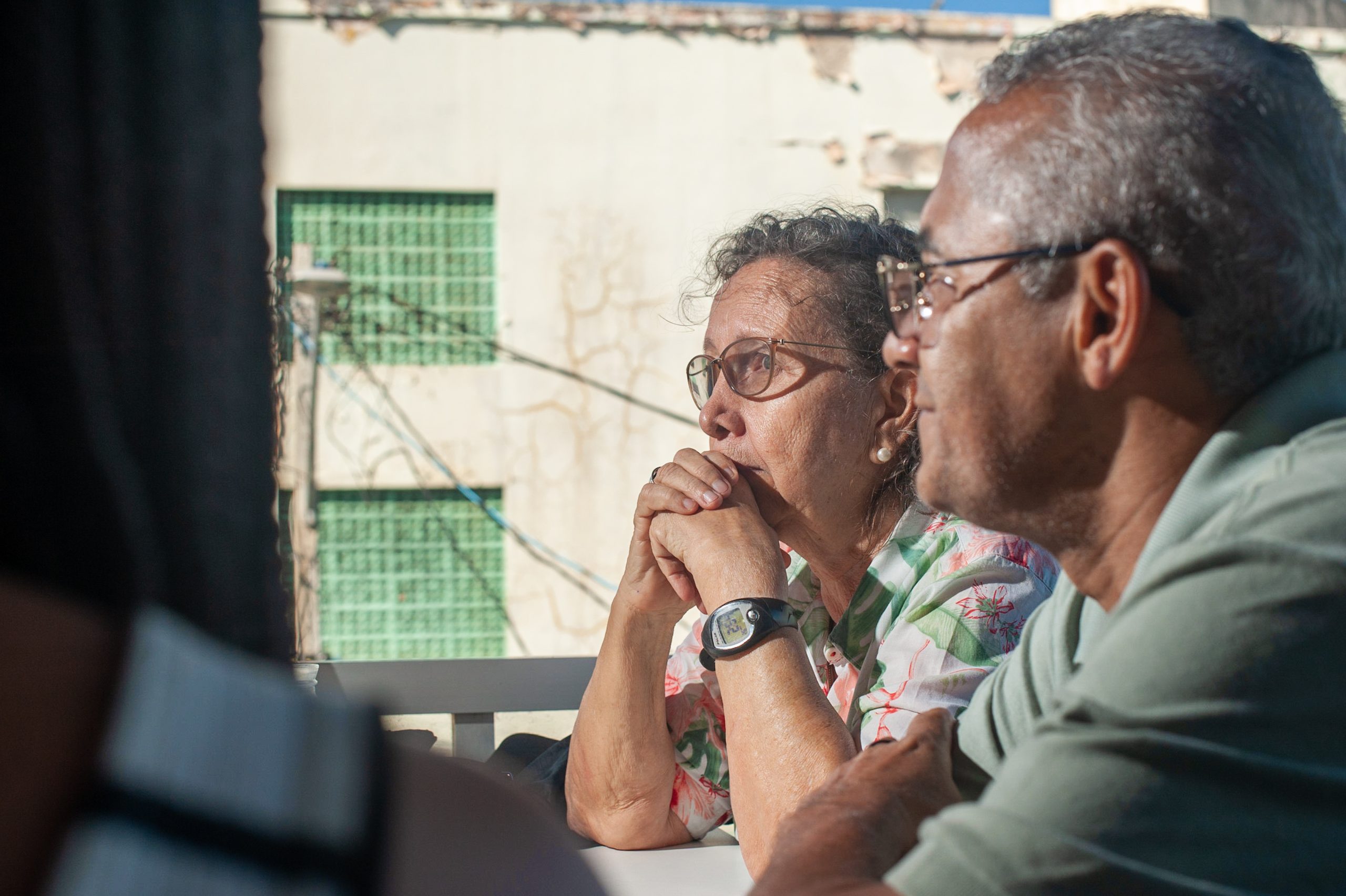
UFBA’s mapping identified 585 pasture commons associations and 1,092 communities linked to them in Bahia. “This number does not represent the totality of communities, but only those that we were able to identify,” says Guiomar Germani, one of the coordinators of the study. She believes that the number could be much higher.
Of the 1,092 communities, 107 have communal land titles. For 15 years, no land title has been issued to such communities.
“With the mass arrival of wind farms, it becomes clearer that the state is acting not to meet the historical demand [to grant titles to squatting communities], but to the interests of the private sector,” criticises Germani.
Germani warns about the introduction of a legal norm favouring energy companies, signed by the state government and the state Attorney General’s office in 2020. “This norm is handing over, on a platter, the patrimony of public lands to the management of wind farms,” she says.
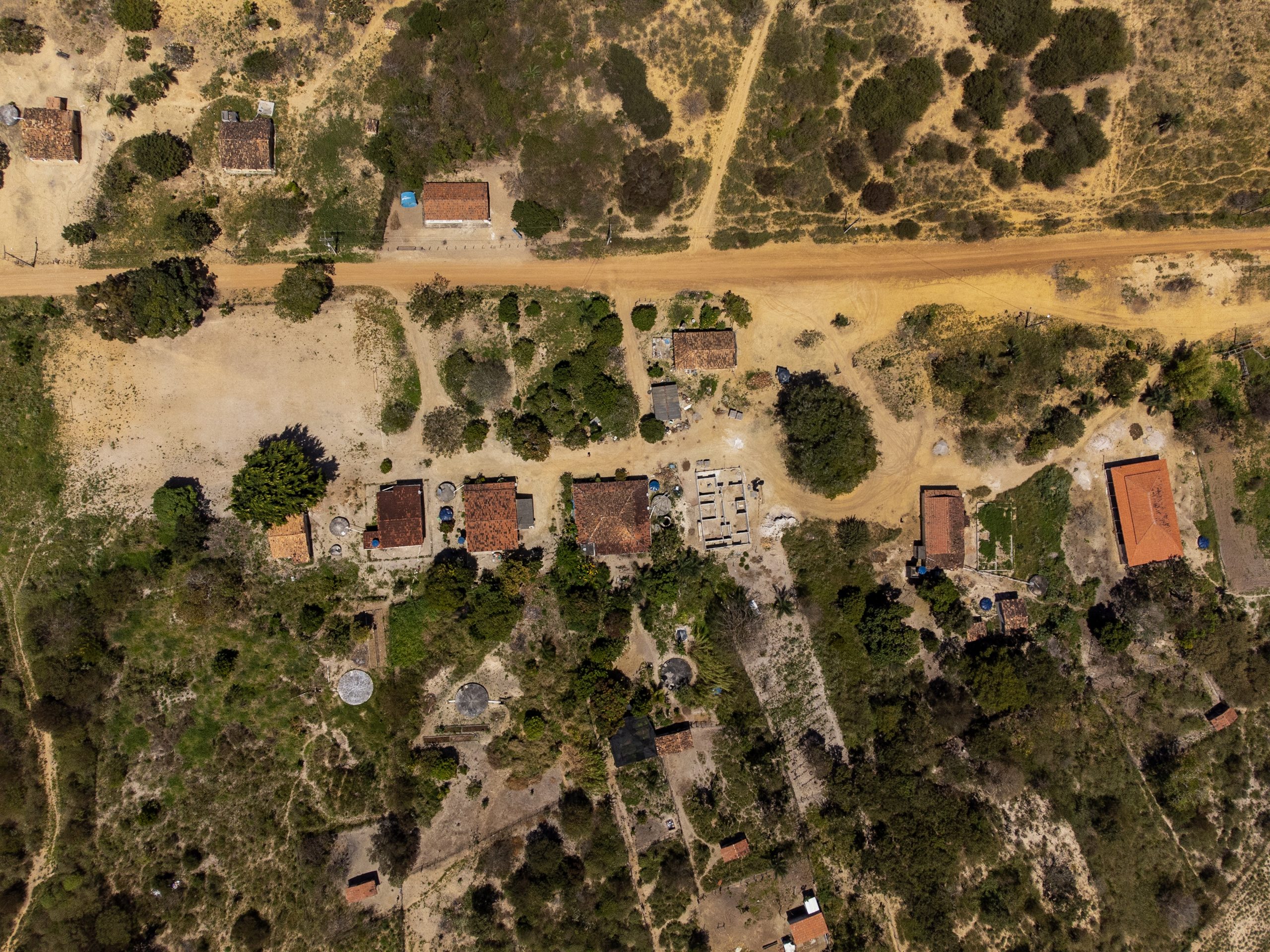
An assessment by the Association of Rural Workers of Bahia (AATR) cites controversial points in the ruling, such as the fact that the wind energy company can select the area of interest and negotiate it directly with the state, disregarding the right of communities to prior consultation, something guaranteed by Convention 169 of the International Labour Organisation, of which Brazil is a signatory. In addition, the legal norm does not define criteria of environmental protection of the Caatinga or of the cultural heritage with which companies should comply when installing wind complexes.
Wind farm harassment
Also in Campo Formoso and neighbouring Fazenda Quina, the Borda da Mata fundo de pasto community has not signed a contract, despite harassment by wind firms over its territory since 2011. The president of the association, Rubem Cruz, says that at that time he took the document proposed by the company, Casa dos Ventos, to be evaluated by the local rural union, and his lawyer detected that 40% of the clauses threatened the rights of the community. They are currently rewriting the text, which they intend to present if wind farms knock on their door once again.
We want clean energy, yes, but energy that includes us. The way it is happening, many companies are taking over land and harming our people
Cruz says he is not against the development of the cleaner energy mix. “What we are against,” the farmer says, “is the misleading way wind farms arrive in the communities, selling illusions and talking only about the money without clarifying about the contract.”
In Borda da Mata, 30 families live off the agro-ecological production of vegetables, flowers, cassava flour and corn. The “loose” area is preserved as a reserve for the Caatinga’s natural vegetation, where typical cacti flourish in the trovoadas (rainy season), and thorny bushes impede passage through the forest.
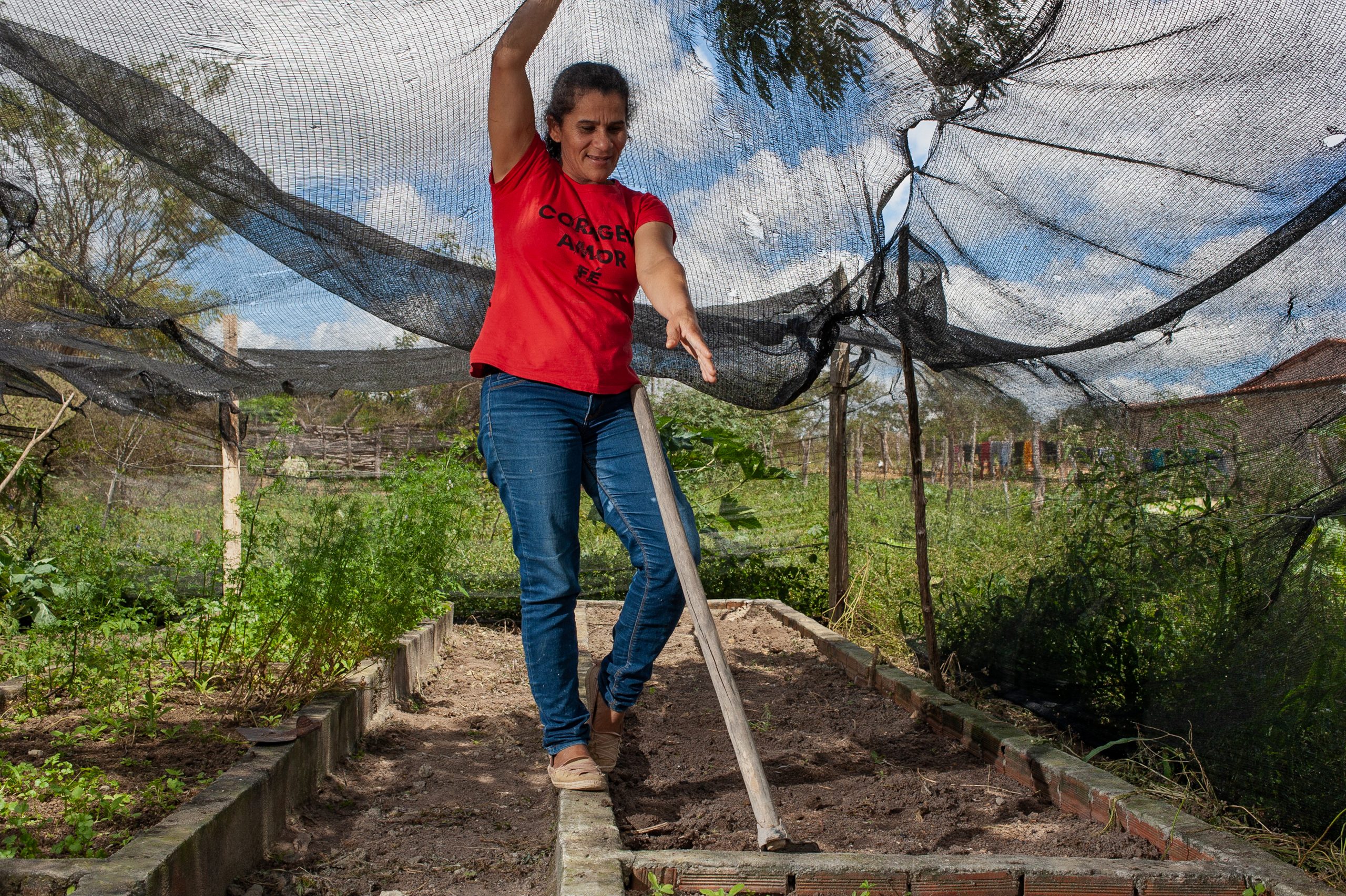
“Yes, we want clean energy, but energy that includes us. The way it’s happening today, many companies are taking over land and harming our people,” Cruz says. “If we leave here, where will we go?”
The Brazilian Wind Energy Association (Abeeólica), which represents 120 companies in the industry, recognises that the sector is growing very fast and needs to accelerate its development of sustainable standards.
“We have noticed some loopholes in regulation, but we are committed to mitigating the impacts with the creation of a best practices guide, as well as a sustainability seal,” the association’s president, Elbia Gannoum, told Diálogo Chino. However, adherence to socio-environmental rules for certification will be voluntary.
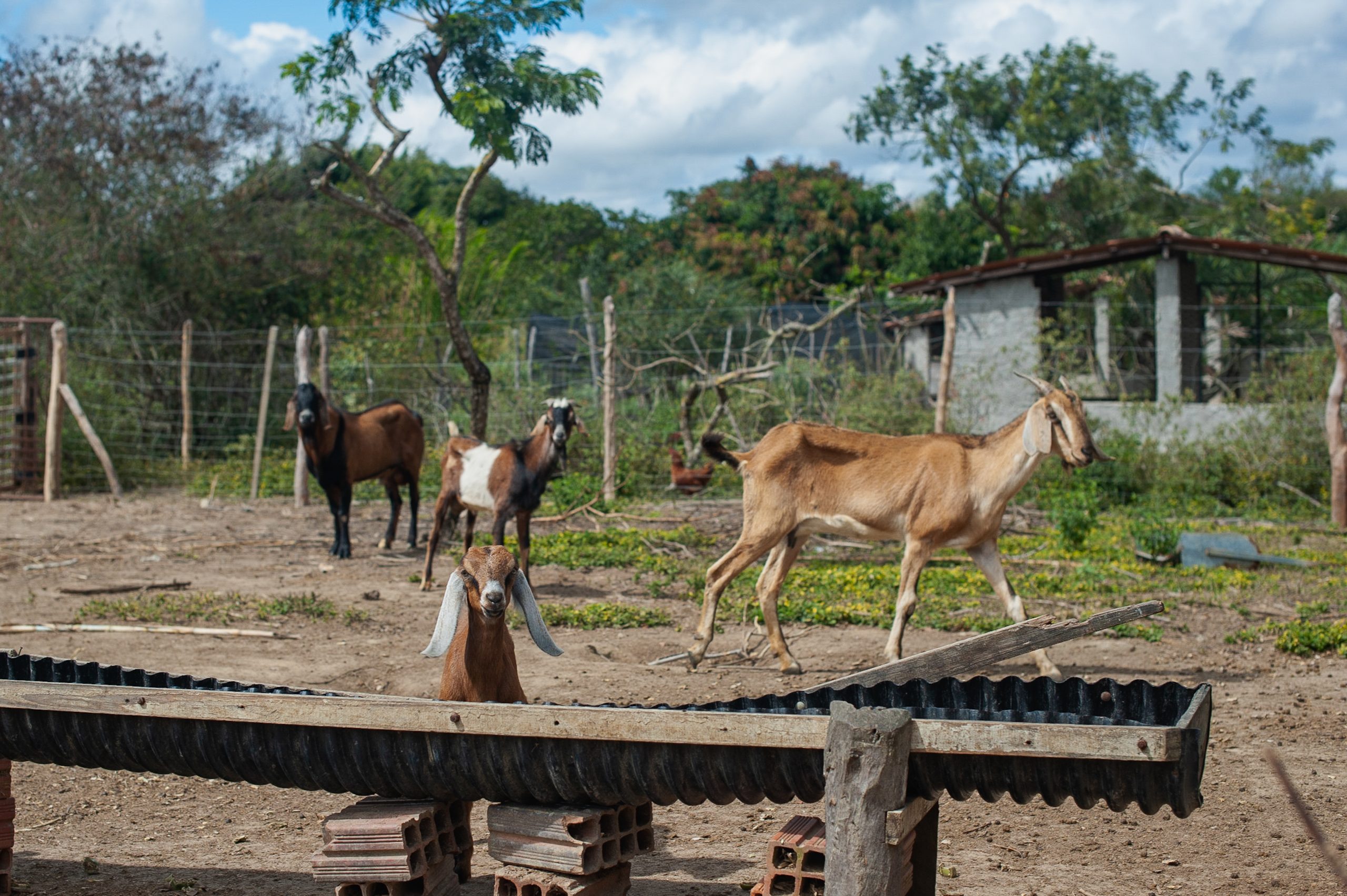
The executive says that the transfer of 1.5% of the proceeds from generation has been accepted by communities, reiterating that it is the same percentage paid by oil royalties in Brazilian municipalities. “On average, the industry pays 2,000 reais [US$375] per turbine per month, so I don’t think this is the problem,” Gannoum says. “Apparently, the complaints are about transparency in generation accounts. We really need to consider that point.”
According to fundo de pasto leaders in Campo Formoso, the monthly amount paid per turbine is around 1,500 reais (US$280). Values and forms of payment tend to vary from municipality to municipality.
Abandoned park brings violence
A year after the federal government’s first auction to exclusively contract wind power in 2009, Companhia Hidrelétrica do São Francisco (Chesf), a subsidiary of Eletrobras, Brazil’s largest electricity generation company, began construction of its first wind farm in Bahia. The Casa Nova I power plant was announced as, at the time, the largest in the country and marked Chesf’s entry into the renewable sector.
Four years later, however, the financial crisis of the Argentine wind turbine manufacturer IMPSA, which was the leader of the consortium, resulted in the works being paralysed. To this day, 30 unfinished turbines remain abandoned at the site. Some, with propellers, still turn under the force of the winds, but do not produce energy. Others, unattended, have been looted. The theft of copper wires from the structures has brought violence to the region, according to residents.
In the rural community of Malvão, 22 families live among these environmental liabilities. Gates blocking access to the turbines, although unlocked today, were not removed from the area and continue to obstruct paths between communities and the grazing of animals.
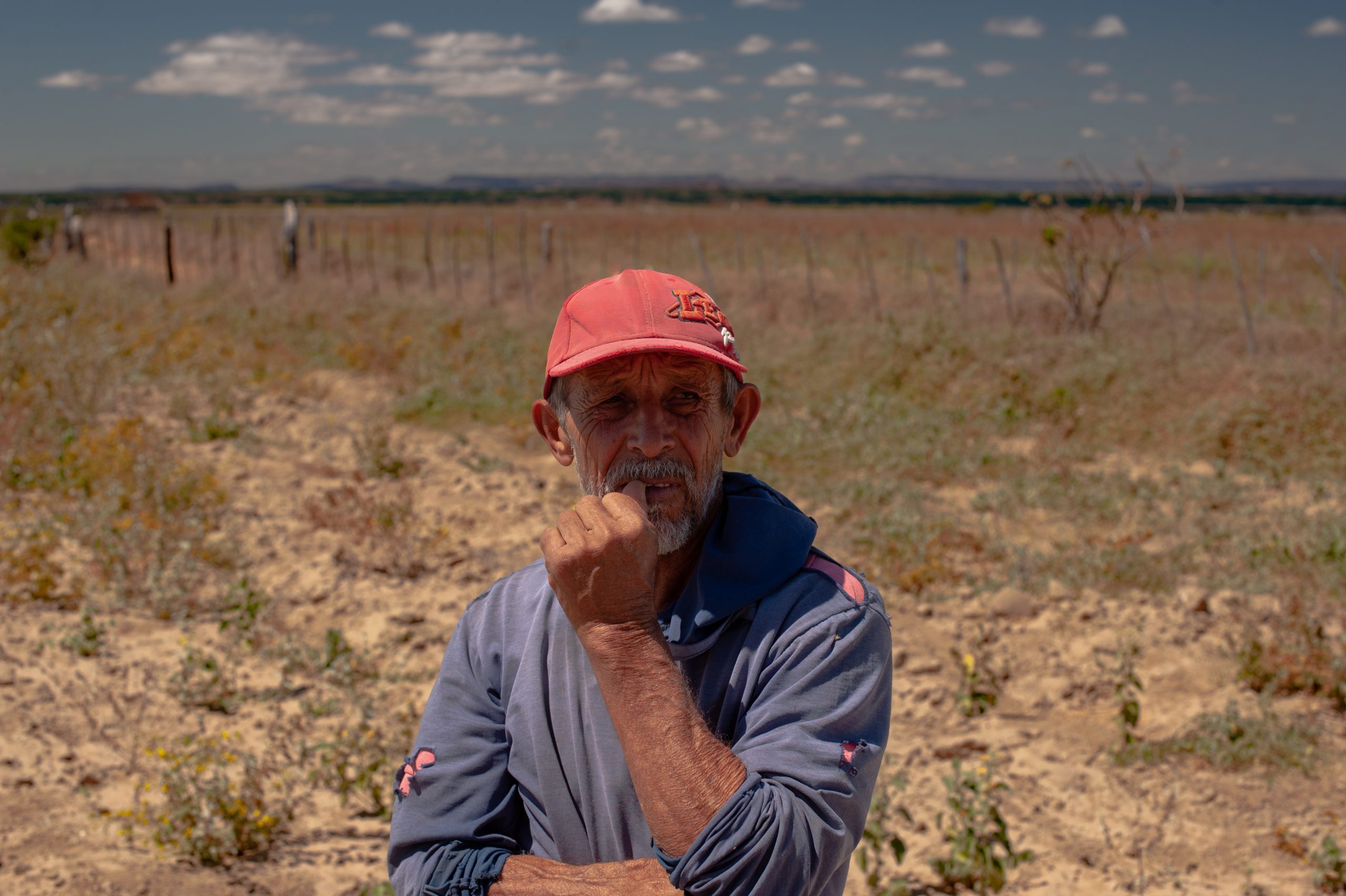
“They no longer came and when the gate was locked, we couldn’t get through. If it were today, we would not have accepted the work,” says farmer Jessé de Souza Alves.
Souza receives 500 reais (US$94) monthly in rent for the land from Chesf, and complains about the devastation caused by the earth moving on the site. He estimates that Casa Nova I knocked down about 50 of the 300 hectares of native vegetation belonging to the community. Centennial species, such as umbuzeiro trees, were cut down. The impacted area was never restored.
“We know that wind generation is good, but they [the companies] don’t do right when they come here,” laments the farmer. “We received this pittance, and the whole mess was left there.” Chesf did not respond to queries about environmental liabilities.
Casa Nova is a Bahia municipality where 86% of the population is vulnerable to poverty and which has a history of violent rural conflicts. In 1978, families from the pasture commons of the Areia Grande community armed themselves and faced Camaragibe, an agribusiness company accused of land grabbing. The squatters expelled the hired guns of the company, which ended up bankrupt, and, victorious, they remained in place.
Farmer Vaneide dos Santos, president of the fundo de pasto association for the communities of Garapa and Baraúna, was a child and lived in Areia Grande at the time of the dispute. Also as a child, her family was forcibly relocated for the construction of the Sobradinho dam, which evicted 72,000 people from their homes and flooded seven municipalities, Casa Nova among them. She harbours traumas from such large energy ventures.
“The companies do not come to bring benefits, but to take away peace,” says the farmer, who lives off raising goats, pigs and chickens. “I have been undisturbed since I left Areia Grande. Now the wind turbines have arrived.”
Today, she lives in the Garapa pasture, eight kilometres from one of the construction sites of the Oitis Wind Farm. When she climbs to the top of the pasture, she can see the turbines being tested. In the region, which borders the state of Piauí, Spanish multinational Iberdrola is installing two of the 12 wind farms that began operating this year.
With funding from the European Investment Bank, the power generation of the 12 plants will be connected to the national grid. The company will focus on selling the production in the free energy market to which Brazilian households – and most companies – still do not have access.
The Oitis 21 and 22 wind farms, which Vaneide sees from her backyard, will not bring any energy security to her backyard, let alone cheaper energy for the community in Garapa.
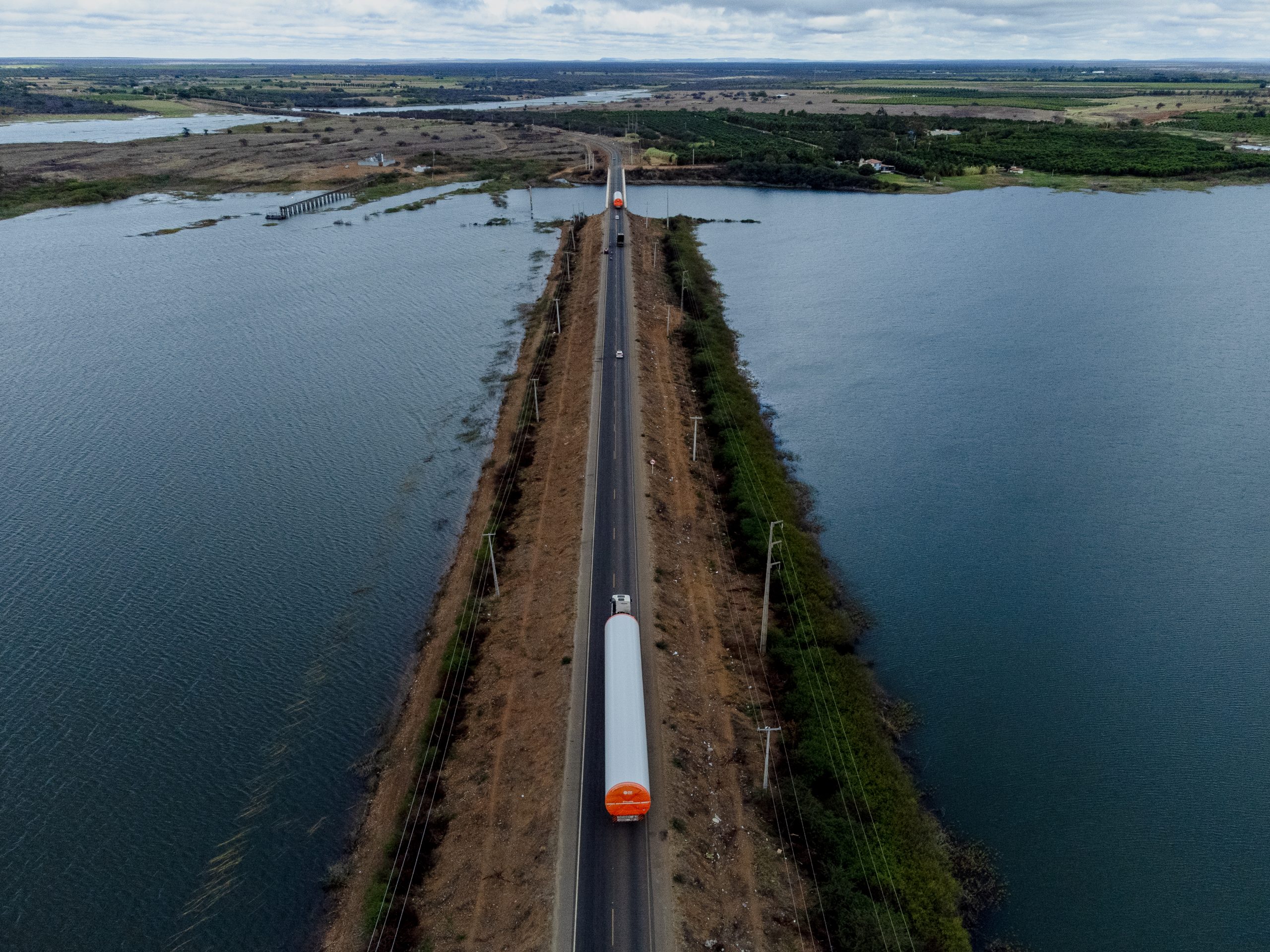
Electricity arrived there just a year ago, and Santos is still trying to sign up for the social energy tariff, aimed at low-income families, as she struggles to pay the 200 reais (US$37) monthly bills. Before, she used solar panels, but the energy was low and was only enough for essential tasks such as keeping the refrigerator running.
Some of the world’s most modern turbines have arrived in Casa Nova, while families living next door still face energy insecurity. Asked about its project, the Iberdrola group said that Neoenergia, the group’s Brazilian arm, “complies with all procedures provided for in Brazilian environmental legislation and regulation, which demonstrates its commitment to sustainable development and respect for society.”
Vaneide Santos’ family is one of five in the association who oppose the project. Another larger group, of ten families, is in favour. “The families who are in agreement with them don’t have much information about how companies act in Brazil,” Santos comments.
No one in their community, Garapa, has a land title. They do not have title to the fundo de pasto communal areas, nor to the individual areas, private to each family.
